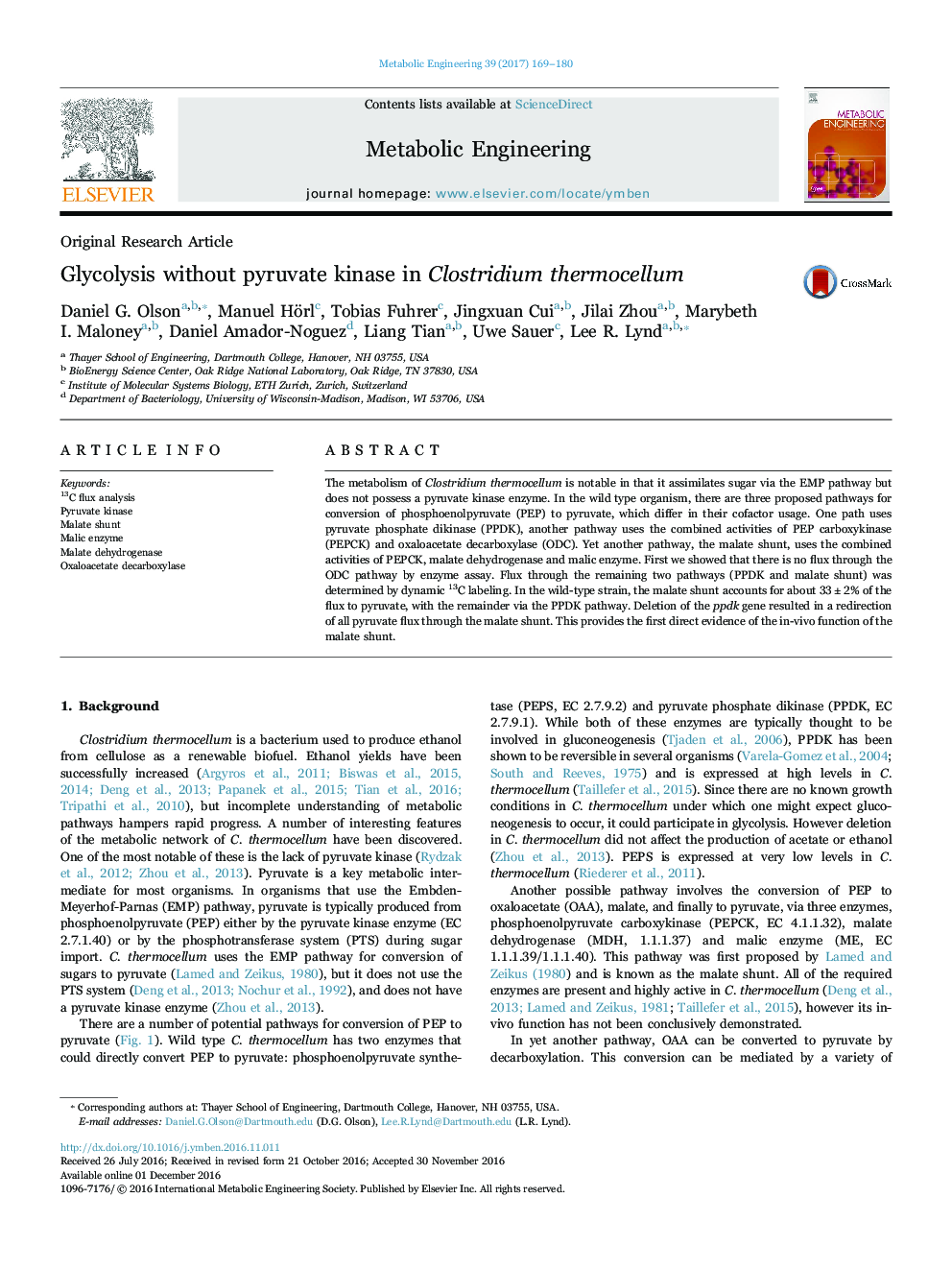| Article ID | Journal | Published Year | Pages | File Type |
|---|---|---|---|---|
| 6452798 | Metabolic Engineering | 2017 | 12 Pages |
•We provide direct experimental evidence of the in-vivo function of the ‘malate shunt’.•Oxaloacetate decarboxylase activity is not present in C. thermocellum.•Pyruvate phosphate dikinase plays a role in glycolytic flux in the wild type strain.
The metabolism of Clostridium thermocellum is notable in that it assimilates sugar via the EMP pathway but does not possess a pyruvate kinase enzyme. In the wild type organism, there are three proposed pathways for conversion of phosphoenolpyruvate (PEP) to pyruvate, which differ in their cofactor usage. One path uses pyruvate phosphate dikinase (PPDK), another pathway uses the combined activities of PEP carboxykinase (PEPCK) and oxaloacetate decarboxylase (ODC). Yet another pathway, the malate shunt, uses the combined activities of PEPCK, malate dehydrogenase and malic enzyme. First we showed that there is no flux through the ODC pathway by enzyme assay. Flux through the remaining two pathways (PPDK and malate shunt) was determined by dynamic 13C labeling. In the wild-type strain, the malate shunt accounts for about 33±2% of the flux to pyruvate, with the remainder via the PPDK pathway. Deletion of the ppdk gene resulted in a redirection of all pyruvate flux through the malate shunt. This provides the first direct evidence of the in-vivo function of the malate shunt.
